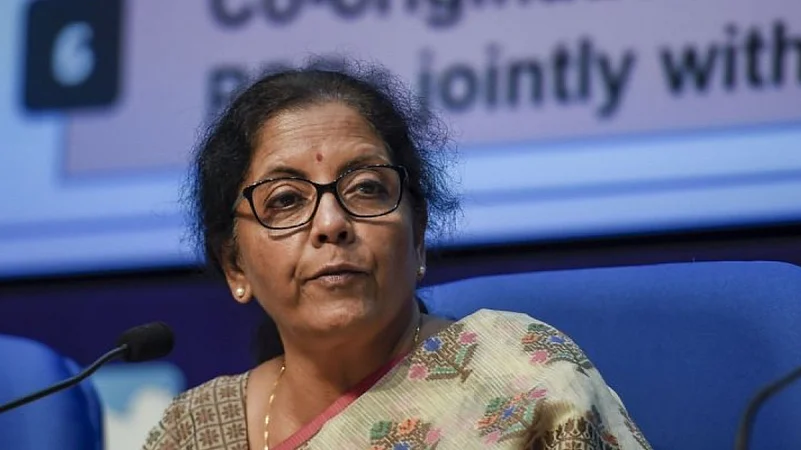The government has taken the load off the private sector in taking the lead to spur economic revival. Union Budget 2022-23 has increased the capital expenditure (Capex) target to Rs 7.5 lakh crore, a 35.4 per cent jump from the budget estimate (BE) of Rs 5.5 lakh crore in 2021-22. The revised estimate (RE) for capital expenditure in 2021-22 came in at Rs 6.03 lakh crore. Capex accounts for 19.02 per cent of the government’s total expenditure for 2022-23, which is pegged at Rs 39.45 lakh crore.
“The virtuous cycle of investment requires public investment to crowd-in private investment. At this stage, private investments seem to require that support to rise to their potential and to the needs of the economy. Public investment must continue to take the lead and pump-prime the private investment and demand in 2022-23,” finance minister Nirmala Sitharaman announced in her budget speech.
Advertisement
What does Capex numbers say?
The allocation for capital expenditure increased to more than 2.2 times the expenditure of 2019-20, and the 2022-23 outlay would account for 2.9 per cent of GDP. “With this investment taken together with the provision made for the creation of capital assets through Grants-in-Aid to States, the effective capital expenditure of the Central government is estimated at Rs 10.68 lakh crore in 2022-23, which will be about 4.1 per cent of GDP,” Sitharaman said in the speech.
The government’s expectation is that increased public-sector spending would kick start the process of job creation and thereby, increasing demand and consumption in the economy.
Advertisement
“An early implementation of the enthusing 24.5 per cent expansion in capital spending to a substantial Rs. 7.5 trillion can trigger a durable economic growth momentum, with the potential to augment job creation, prop up domestic consumption, and hasten capacity expansion by the private sector. The impact of higher GoI Capex will be complemented by the interest-free bonds of Rs. 1 trillion to the states, which will help them prioritise Capex even as they traverse the challenges posed by end of GST compensation,” says Aditi Nayar, chief economist, ICRA.
Not everyone is convinced that this is the right way to press for growth in the economy. Former finance secretary Subhash Chandra Garg even argues that there is “no real increase in government’s own Capex”.
The government has estimated the current year’s GDP growth to be 9.2 per cent on the back of a sharp rebound and recovery of the economy, reflective of our country’s strong resilience, Sitharaman said. The Economic Survey 2021-22 has a projected GDP growth rate of 8 to 8.5 per cent for 2022-23. But it would be worthwhile to note that the current financial year’s 9.2 per cent growth estimation in the budget would come after a contraction of 7.2 per cent seen in 2020-21. The real growth in the current financial year, therefore, would be less than 2 per cent compared to the 2019-20 level.
Advertisement
What has to be also taken into account is that the government would be borrowing about Rs 11.6 lakh crore from the market in 2022-23, an increase of about Rs 2 lakh crore from the current year's BE of Rs 9.7 lakh crore. The additional borrowing is expected to fund the increased Capex allocation.
“For RE 2021-22, the fiscal deficit is 6.9 per cent and revenue deficit is 4.7 per cent. Meaning, roughly 60 per cent of the borrowing is being used to fund current consumption. In FY23 as per what has been proposed, the ratio comes down slightly (fiscal deficit BE 2022-23 pegged at 6.4 per cent and revenue deficit at 3.8 per cent). So, relatively a higher proportion of borrowing has been proposed to fund Capex in FY23,” explained Devendra Pant, chief economist, India Ratings.
Advertisement
Missing private investment
The budget speech makes it amply clear that the government is expecting to achieve growth relying mostly on public spending. Private investment slowed down even before the outbreak of the Covid-19 pandemic. The Reserve Bank of India (RBI) in its May 2019 report observed that 2017-18 was the seventh consecutive year of annual contraction seen in the private sector’s Capex, which was down 10.15 per cent (annual growth rate) in 2017-18 from Rs 1,65,000 crore in 2016-17.
In 2021 too, the RBI said in an article that private investment was “missing in action” at a time when all engines of aggregate demand had begun firing to boost economic growth. The article observed that the only way to whet investment appetite was by rekindling the animal spirits and through a spontaneous urge for action rather than inaction.
Advertisement
“What we have is, general government contributing just 12 per cent the Capex and this is the long-term average of FY12-FY20. Government Capex has a limited role to uplift investment. Of course, that in many sectors crowds in private investment. But now we are in a low-demand situation and private sector participation in Capex is limited to certain sectors. Unless demand revives, it is very difficult for investment revival to take place. The government just by its own cannot revive, what they say, ‘animal spirits',” Pant said.
The Covid-19 pandemic only exacerbated the slowdown in private investment. While there are excess capacities, demand seems to have been hit by multiple factors, including across-the-sector job losses and salary cuts. According to the Economic Survey 2022, while total consumption is estimated to have grown by 7 per cent in 2021-22, private consumption still remains below the pre-pandemic level. The government believes that it was supply-side disruptions that led to a “dip in vehicle registrations”, holding people from spending money. This has been aided by high inflation in raw material prices, thereby hitting consumption too. A lack of private sector investment has created a peculiar situation of jobless growth in the Indian economy, where people only associated with the government sector are contributing to the consumption cycle.















 Just one email a week
Just one email a week